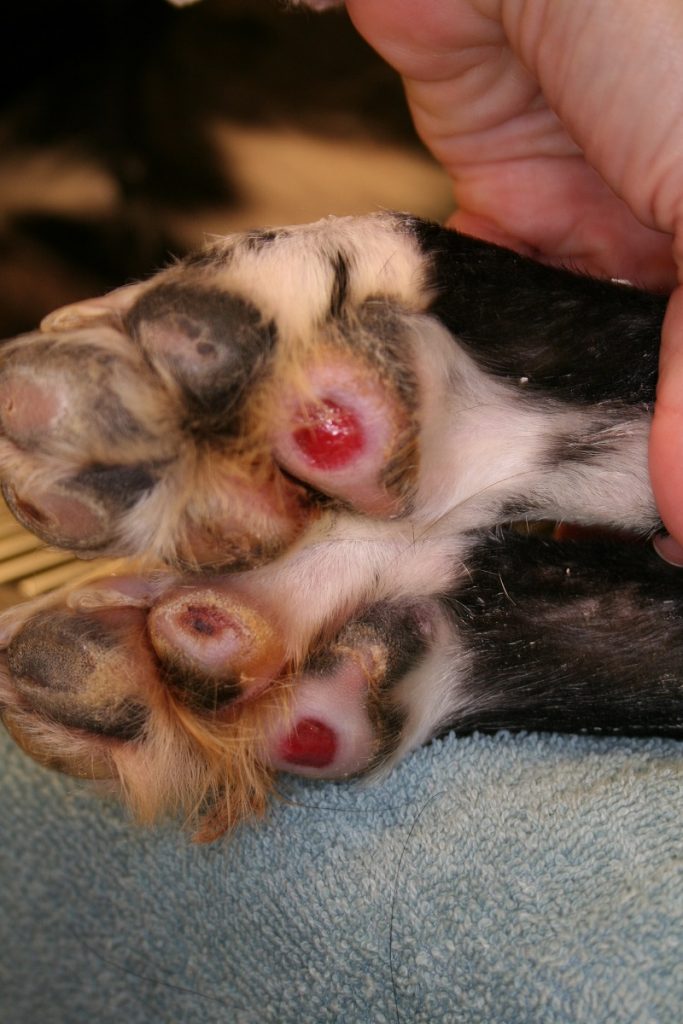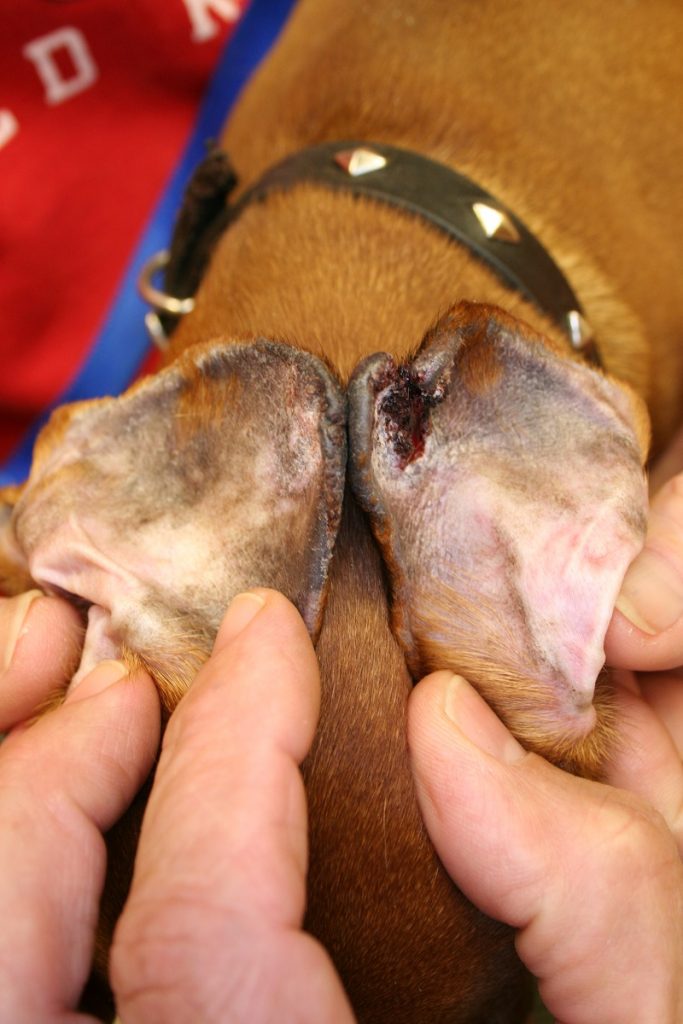Derm Spotlight: Cutaneous Vasculitis skin condition
What is it?
Cutaneous vasculitis refers to blood vessel inflammation that leads to compromised blood supply to the skin. The inflammation occurs due to the immune system being over-stimulated. It is an uncommon skin condition in dogs and cats and can occur in any breed, age, or gender.
What causes it?
There are many potential causes of cutaneous vasculitis. Some of the causes include: infections (bacterial, fungal, viral, tick-borne diseases), drugs and vaccines, food, neoplasia, and autoimmune diseases. Often, the cause is idiopathic (unknown).
What does it look like?
Areas of the skin that contain smaller vessels or less blood flow are the most commonly affected; therefore, dogs and cats may have ulcers in the extremities (ear pinnae, nose, mouth, paws, tail). There may be reddened, swollen, bruised or necrotic (dead) skin. Hair loss may be present.

How is it diagnosed?
Cutaneous vasculitis is diagnosed by a combination of clinical signs and skin biopsy for histopathology. Once it is diagnosed, further diagnostic work up is required to determine the cause (if there is one). This may include a detailed history, blood work, and imaging.
How is it treated?
Treatment would be directed towards the cause of cutaneous vasculitis (if there is one). Often topical and systemic immunomodulating/immunosuppressive therapies are used. A medication that increases blood flow called pentoxifylline is commonly used to treat this condition. Some animals may require lifelong treatment.
1. Innerå M. Cutaneous vasculitis in small animals. Vet Clin North Am Small Anim Pract. 2013;43(1):113-134. doi:10.1016/j.cvsm.2012.09.011
Need help? Have a question? Schedule an appointment? Contact Us
- Oct, 13, 2020
- Disease Spotlight


